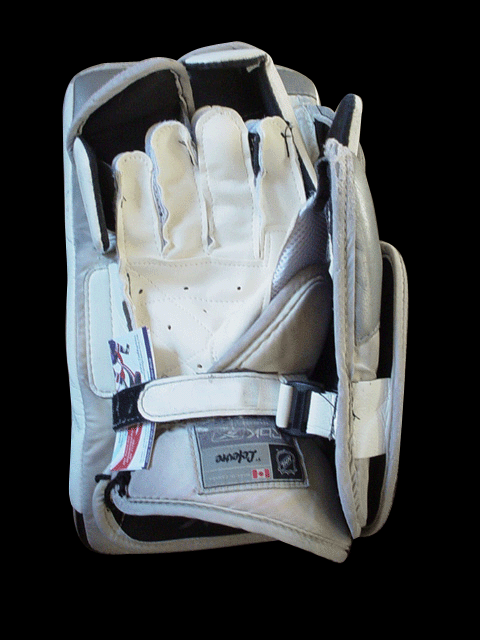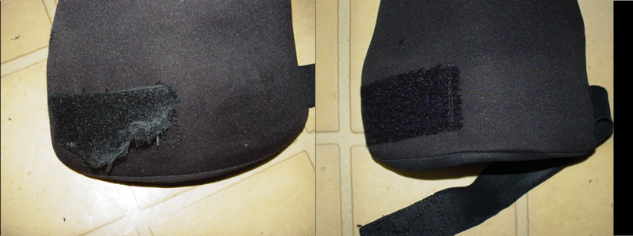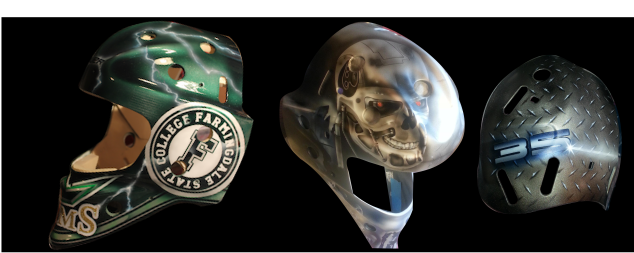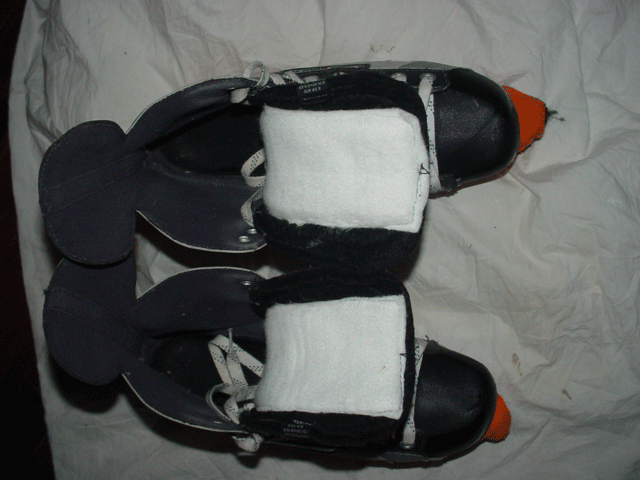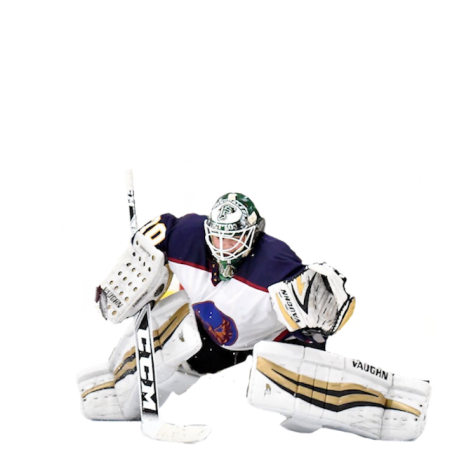My process starts with creating a computer generated design of the graphics that will be applied to the helmet. (See Concept to Complete) This art work will also be used for the design and approval process and also to cut out masking material that will be used in the airbrush process. Several masks may be cut for each design depending on how many colors and the complexity.
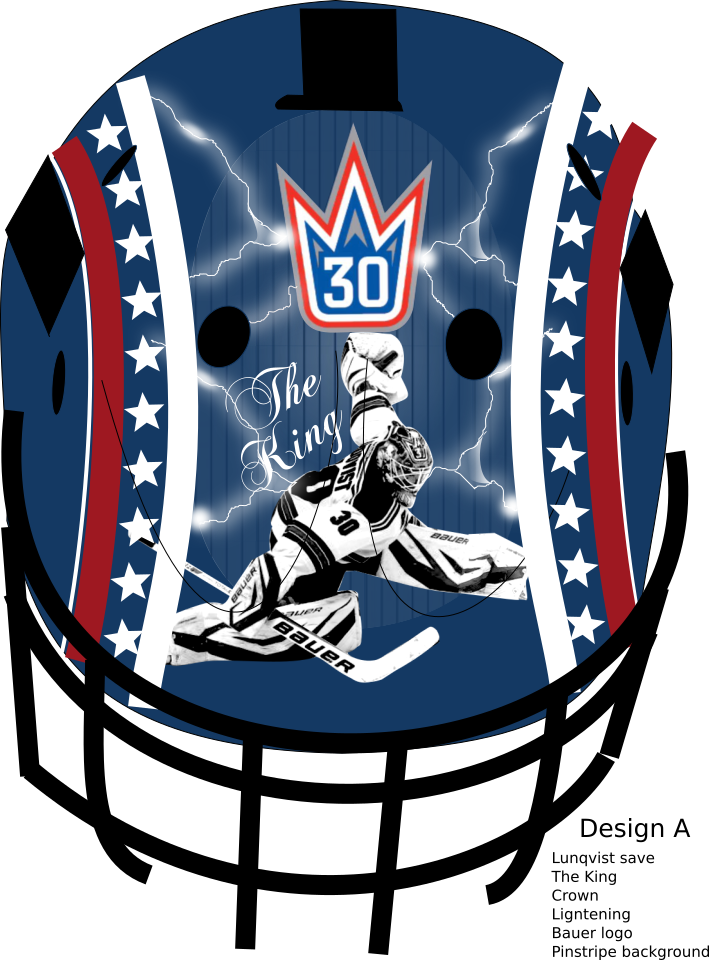
Depending on the design, I may add lightening, lens flares or other items that connect the graphics together.
As part of my process, I apply a background pattern that is usually visible up close. It can be a hint of a brick wall, stripes, dots stars, or something more elaborate. If you look at my past helmets and zoom in close, you will see some of these patterns. It will make the main graphics appear more dimensional when complete.
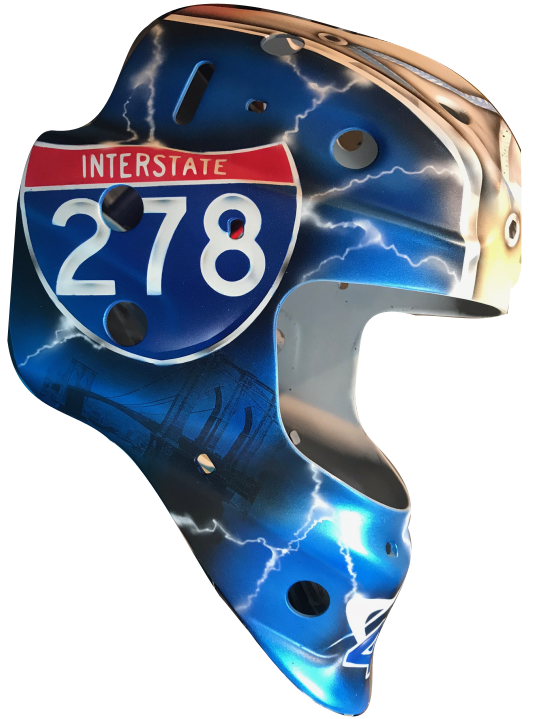
Once approved and I have the helmet, I start removing all hardware. We prefer to work on new helmets.
If you have a helmet you have been using, the condition will be assessed. Chips and cracks can be repaired at additional cost. (See our Helmet Resin Repair page) On helmets that are not new, we may have to cut out rusted hardware which will be replaced with new hardware at no extra cost. If you need/want to replace the cage, you can do so at an additional cost.
Depending on the manufacturer, I either remove the padding or cover it so it does not get overspray paint.
The helmet is then sanded in all curves and crevices so that the paint will adhere, then cleaned to remove any oils or waxes.
A coat of primer/sealer is applied. The graphics are printed and taped to the helmet for sizing and determine interference of straps and holes.
When the airbrushing is complete, a few coats of automotive clear coat is applied to protect the paint. When it is fully cured, the hardware (and padding if applicable) is reinstalled and is now ready for delivery.
Backplates require all the prep work as stated above. The stickers will be removed. If I can remove them in one piece I will stick them to the inside of the backplate (sometimes they just fall apart). The glue must be cleaned off before sanding and priming. Artwork is created and masking material is cut for the design and a final automotive clear coat is applied. The cost of backplate is $50 for a one color to match the helmet (only if the helmet is also being painted). A simple design (number or name) would be $100, more if the design becomes more detailed.
A new backplate harness can be created in the color of your choice. The harness that allows greater exposure of the surface is stitched in and is a separate cost.
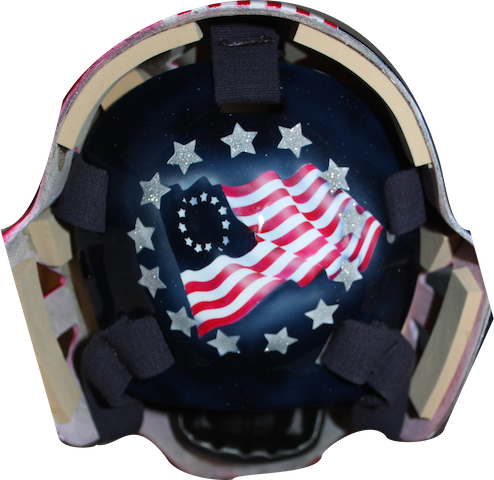
As you can see, it is labor intensive. The airbrushing is only a part of the entire process.

